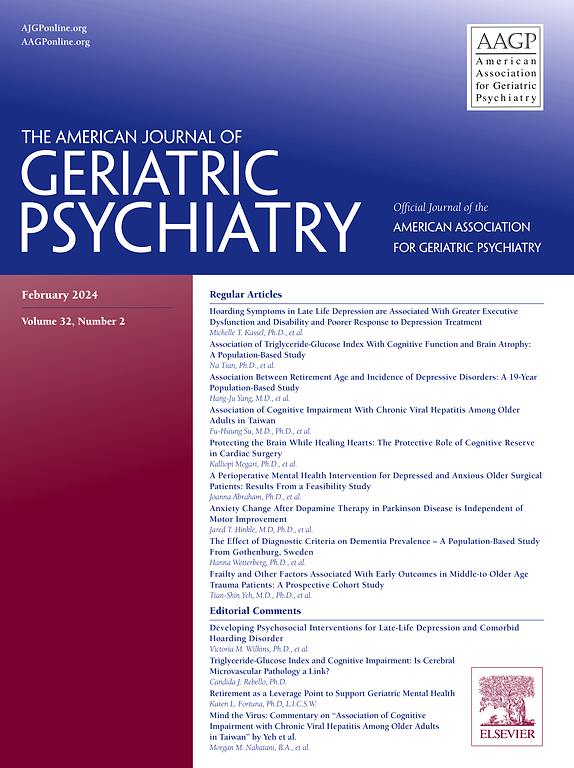囤积症的表观遗传后果
摘要
导言当一个人认为物品有价值而难以丢弃时,就会出现物品丢弃障碍(HD)。当面临丢弃物品的挑战时,患者会感到极度痛苦,从而导致物品堆积和日常生活功能受损(Kalogeraki 和 Michopoulos,2017 年)。人们对囤积癖患者的影响进行了广泛的研究,但最近的研究表明,囤积行为可能是人类从哺乳动物祖先那里遗传下来的硬性基因。此外,在某种形式的创伤发生之前,囤积行为可能一直处于不活跃状态(Miguel and Ligabue-Braun,2019)。一项研究以鼩鼱为动物模型,发现鼩鼱在冬季会表现出复杂的囤积行为,以确保自己的生存,但在丰收时节,它们囤积食物的行为会减少(Ligabue-Braun,2019)。提出的一个假设是,在巨大压力时期,如果出现创伤性条件,人类体内通常处于休眠状态的信号通路就会重新激活(Ligabue-Braun,2019)。囤积基因突变的个体尤其容易出现这种行为。通过了解囤积行为的代际传播,可以采取预防策略,促进更健康的老龄化进程。本研究旨在调查报告的父母囤积行为状况与成年子女精神症状严重程度之间的关联。事实证明,囤积不仅会导致 HD 患者的衰弱,也会对其亲属造成损害(Drury et. al, 2014)。方法参与者是美国一所大型州立大学的本科生,他们在 2022 年秋季学期完成了一项在线调查,以换取课程学分(N = 363)。参与者完成了一份自我报告,其中包括人口统计学问题、父母的杂物史、对可能的杂物干预措施的看法,以及对囤积严重程度、精神症状和社会心理功能的标准化测量。囤积严重程度采用 "储蓄清单-修订版"(SI-R)进行评估,这是一个包含 23 个项目的李克特量表,用于评估囤积的三大症状:丢弃困难、储蓄冲动和杂物的影响。患者报告结果测量信息系统(PROMIS)简表用于评估焦虑(8a)和抑郁(8b)症状。结果8%的参与者(n = 28)在回答 "您是否认为您的父母/监护人有囤积行为?这些参与者在 SI-R 总表中的囤积严重程度较高(M = 23.86 (SD = 2.04) vs. M = 17.21 (SD = 13.11);t (359) = 2.61,p < .01),但在 PROMIS 焦虑 8a 和抑郁 8b 短表中的囤积严重程度较高(两者的 ps > .05)。结论在完成研究后,发现表观遗传因素对参与者产生了影响。研究发现,认为自己的父母过度囤积物品的参与者囤积物品的严重程度较高。通过了解表观遗传学如何影响心理健康,参与者可以更好地了解他们的一些负面心理健康症状的病因,从而在整个生命周期内采取更有效的干预措施。Introduction
Hoarding Disorder (HD) occurs when an individual has difficulty discarding items due to the belief they hold value. When faced with the challenge of discarding the items, the individual experiences extreme distress which results in item accumulation and impairment of daily life functioning (Kalogeraki and Michopoulos, 2017). The implications of individuals suffering from hoarding have been extensively studied, but recent research suggests that hoarding behavior may be hard-wired in humans from our mammalian ancestors. Additionally, it can remain inactive until some form of trauma occurs (Miguel and Ligabue-Braun, 2019). In one study, shrews were used as an animal model and were found to display complex hoarding behavior during the winter months to ensure their survival, but during times of bountifulness they hoarded food items less (Ligabue-Braun, 2019). One hypothesis suggested was that during times of great stress a signaling pathway that normally lies dormant in humans can become reactivated if traumatic conditions are present (Ligabue-Braun, 2019). Individuals with a mutated form of the hoarding gene are especially susceptible to this type of behavior. By understanding the generational transmission of hoarding, preventative strategies can be employed to promote a healthier aging process. The purpose of this study was to investigate the association between reported parental hoarding status and psychiatric symptom severity in adult children. Hoarding has been shown to not only cause debilitation in individuals with HD, but it can cause impairment in their relatives as well (Drury et. al, 2014).
Methods
Participants were undergraduate students at a large state university in the United States who completed an online survey in exchange for course credit during the Fall 2022 semester (N = 363). Participants completed a self-report battery that included demographic questions, their parental history of clutter, perceptions about possible interventions for clutter, and standardized measures of hoarding severity, psychiatric symptoms, and psychosocial functioning. Hoarding severity was assessed using the Saving Inventory-Revised (SI-R), a 23-item Likert-type scale that assesses the three main symptoms of hoarding: difficulty discarding, urges to save, and impact of clutter. The Patient-Reported Outcomes Measurement Information System (PROMIS) short form measures were used to assess symptoms of Anxiety (8a) and Depression (8b).
Results
Eight percent of participants (n = 28) answered yes to the question “Would you consider your parent(s)/guardian(s) as people who hoard?” These participants reported higher hoarding severity on the SI-R Total (M = 23.86 (SD = 2.04) vs. M = 17.21 (SD = 13.11); t (359) = 2.61, p < .01) but not on the PROMIS Anxiety 8a and Depression 8b short forms (both ps > .05).
Conclusions
After completing the study, epigenetic factors were found to impact the participants. Participants who considered their parents as people who hoard items excessively were found to have higher hoarding severity. By understanding how epigenetics affect their mental health, participants can have a better understanding of the etiology of some of their negative mental health symptoms, which will lead to more efficacious interventions across the lifespan.

 求助内容:
求助内容: 应助结果提醒方式:
应助结果提醒方式:


